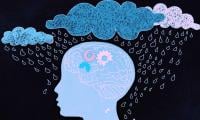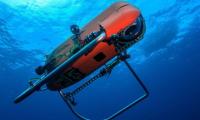How does the coronavirus kill?
The coronavirus infection triggers fever and coughing. It then leads to shortness of breath
BEIJING: Coronavirus infections attack the respiratory tract, which can then lead to illnesses like pneumonia or the common cold.
Between November 2002 and July 2003, an outbreak of severe acute respiratory syndrome (SARS) in southern China caused an eventual 8,098 cases, resulting in 774 deaths reported in 17 countries — with the majority of cases in China mainland and Hong Kong (9.6% fatality rate) according to the World Health Organization (WHO). Since 2004, no cases of SARS were reported worldwide. In recent days, a new SARS-like virus has so far killed dozens (56 people as of Sunday morning) and infected almost 2,000, mostly in mainland China, according to international media.
Known as Novel Coronavirus, codenamed by the WHO as 2019-nCoV, it is thought to have emerged from a market in the city of Wuhan, and has since spread around the world.
How does it kill?The coronavirus infection triggers fever and coughing. It then leads to shortness of breath. In severe cases — such as pneumonia — nCoV infection could lead to gastrointestinal problems, as well as kidney failure, according to the US Centres for Disease Control and Prevention (CDC).
As of Saturday, January 25, almost 1,300 people have been infected across China, the bulk of them in and around Wuhan. Nearly all of those who died were in the Wuhan region, but officials have confirmed two deaths elsewhere. The city of Macau, a gambling hub hugely popular with mainland tourists, has confirmed two cases. In Hong Kong, five people are known to have the disease. Three of those cases were confirmed in the 24 hours to Saturday morning. What a leading virology team saysA leading Chinese virology team compared the genetics and proteins of the new virus, nCoV and SARS.
The team then warned: "The Wuhan nCoV poses a significant public health risk for human transmission." Wuhan nCoV — aka the novel coronavirus (first detected in Wuhan in December 2019) — behaves like SARS, i.e. it has the ability to bind to a protein found on the surface of most human lung cells.
"People also need to be reminded that risk and dynamic of cross-species or human-to-human transmission of coronaviruses are also affected by many other factors."
These factors include the host's immune response, the speed with which the viruses can multiply inside human lungs, and the potential mutations that might make the virus more virulent or transmissible.
Signs and symptomsInitial symptoms are flu-like and may include fever, muscle pain, lethargy symptoms, cough, sore throat, and other nonspecific symptoms.
The symptom common to all patients: fever above 38 °C (100 °F). This may eventually lead to shortness of breath and pneumonia — either direct viral pneumonia or secondary bacterial pneumonia. Like SARS, the average incubation period for the novel coronavirus (2019-nCoV) is four–six days, though it could be as short as 1 day or as long as 14 days.
Route of transmissionThe primary route of transmission is contact of the mucous membranes with respiratory droplets or fomites.
While diarrhea is common in people infected by coronavirus, the fecal-oral route does not appear to be a common mode of transmission, said experts. What experts say:Leading US health experts reportedly predicted in October that a new coronavirus could kill up to 65 million people in a year — in a warning issued three months before the recent outbreak in China.
Experts at the prestigious Johns Hopkins Centre for Health Security modeled a hypothetical pandemic on a computer program as part of research last October. The prediction was modeled using a hypothetical coronavirus outbreak.
The hypothetical disease took just 18 months to wipe out 65 million people around world. Dr Eric Toner, a senior researcher at Johns Hopkins, said he wasn't shocked when news of the coronavirus outbreak in Wuhan first came out in late December.
New pandemic"'I have thought for a long time that the most likely virus that might cause a new pandemic would be a coronavirus,' he told Business Insider. "We don't yet know how contagious it is. We know that it is being spread person to person, but we don't know to what extent.
"An initial first impression is that this is significantly milder than SARS. So that's reassuring. On the other hand, it may be more transmissible than SARS, at least in the community setting."
How did Novel Coronavirus develop?It's not clear. There are reports it was transmitted to humans who ate infected bats or snakes. There's no scientific proof to back this claim.
It was in late 2017 — 15 years after it was first detected — that Chinese scientists traced the SAR virus through the intermediary of civets to cave-dwelling horseshoe bats in Yunnan province.
But experts said the new coronavirus was likely transmitted from touching or eating an infected animal in Wuhan. During the SARS outbreak, the virus killed about 1 in 10 people who were infected.
How to prevent coronavirus There is no vaccine yet for coronavirus. Isolation and quarantine remain the most effective means to prevent its spread.
Other preventative measures include:
· Quarantine
· Hand-washing
· Disinfection of surfaces for fomites
· Wearing a surgical mask
· Avoiding contact with bodily fluids
· Washing the personal items of someone with the virus in hot, soapy water (eating utensils, dishes, bedding, etc.)
· Keeping children with symptoms home from school
· Simple hygiene measures
· Isolating oneself as much as possible to minimise the chances of transmission of the virus
What are the effective public health interventions?Many public health interventions were made to try to control the spread of the disease, which is mainly spread through respiratory droplets in the air.
These interventions included:
· Warlier detection of the disease
· Isolation of people who are infected
· Droplet and contact precautions
· The use of personal protective equipment (PPE), including masks and isolation gowns
A screening process was also put in place at airports to monitor air travel to and from affected countries. Although no cases have been identified since 2004, the CDC is still working to make federal and local rapid response guidelines and recommendations in the event of a reappearance of the virus.
Who does it affect the most?Coronavirus is most infectious in severely ill patients, usually occurring during the second week of illness.
-
 Duke's Peace Talks With King Charles, Prince William: 'Ball Is In Harry's Court'
Duke's Peace Talks With King Charles, Prince William: 'Ball Is In Harry's Court' -
 New Research Finds Back Pain May Disrupt Men’s Sleep Quality Later In Life
New Research Finds Back Pain May Disrupt Men’s Sleep Quality Later In Life -
 Jennifer Lopez Still 'very Close' With Ben Affleck's Children, Invites Them To Vegas
Jennifer Lopez Still 'very Close' With Ben Affleck's Children, Invites Them To Vegas -
 Matt Damon Gets Honest About Netflix's Way Of Storytelling
Matt Damon Gets Honest About Netflix's Way Of Storytelling -
 Prince William, Harry Rift Still 'simmering Away'
Prince William, Harry Rift Still 'simmering Away' -
 What's Buzzing Around TikTok's 'PineDrama' App: Everything You Need To Know
What's Buzzing Around TikTok's 'PineDrama' App: Everything You Need To Know -
 Who’s Next After Australia’s Under-16s Social Media Ban?
Who’s Next After Australia’s Under-16s Social Media Ban? -
 Do You Have Depression Or Is It Just Monday Blues? Find Out Where Science Stands
Do You Have Depression Or Is It Just Monday Blues? Find Out Where Science Stands -
 Why Claude Is Gaining Momentum In Revolutionizing The AI Landscape
Why Claude Is Gaining Momentum In Revolutionizing The AI Landscape -
 Elon Musk Unveils Plans To Take Humanity To The Moon And Mars
Elon Musk Unveils Plans To Take Humanity To The Moon And Mars -
 Air Pollution May Play A Role In Prostate Cancer Risk, Experts Warn
Air Pollution May Play A Role In Prostate Cancer Risk, Experts Warn -
 Royal Expert Reveals Real Reason King Charles Won't Meet Prince Harry Next Week
Royal Expert Reveals Real Reason King Charles Won't Meet Prince Harry Next Week -
 Ansel Elgort Welcomes His First Baby In Secret
Ansel Elgort Welcomes His First Baby In Secret -
 Startup Aims To Brighten Night Skies With Space Mirrors
Startup Aims To Brighten Night Skies With Space Mirrors -
 Cheaper Cars, Fewer EVs: Trump Administration Shifts ‘auto Policy’ Focus
Cheaper Cars, Fewer EVs: Trump Administration Shifts ‘auto Policy’ Focus -
 Meghan Markle Takes 'breadwinner' Role In Prince Harry's California Life
Meghan Markle Takes 'breadwinner' Role In Prince Harry's California Life




